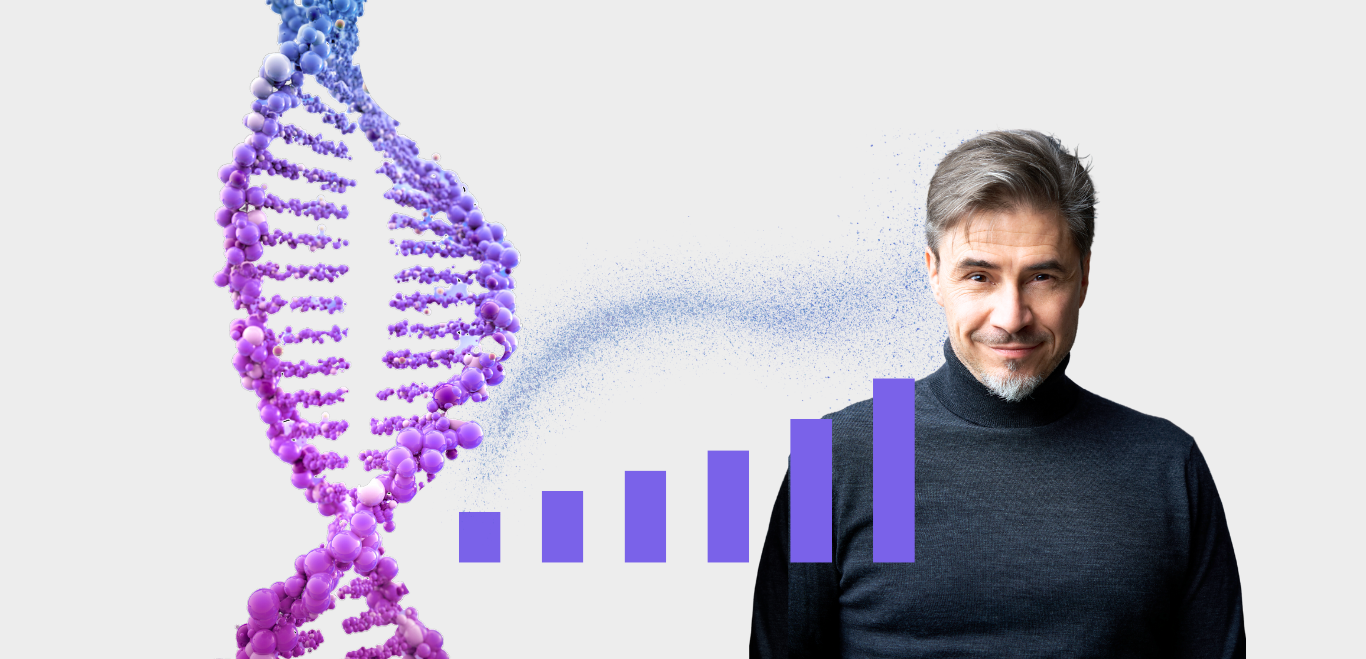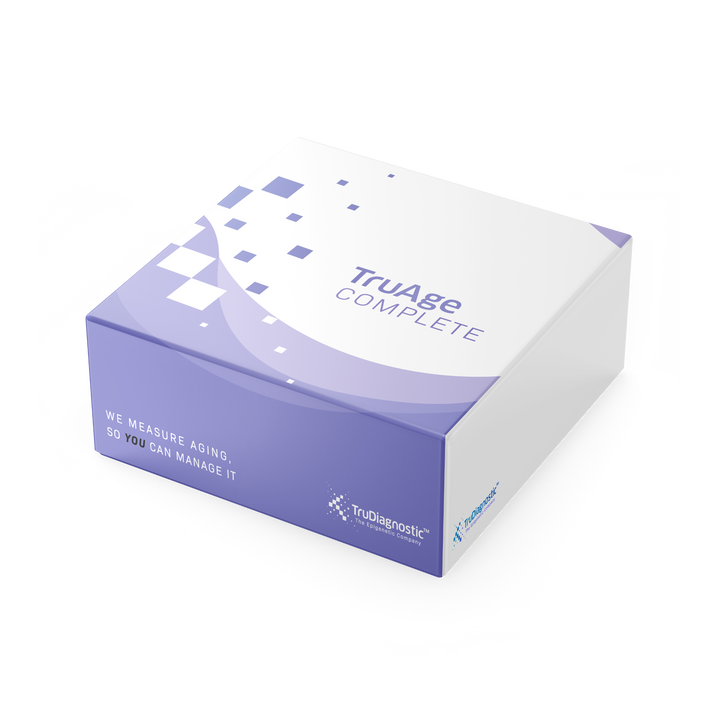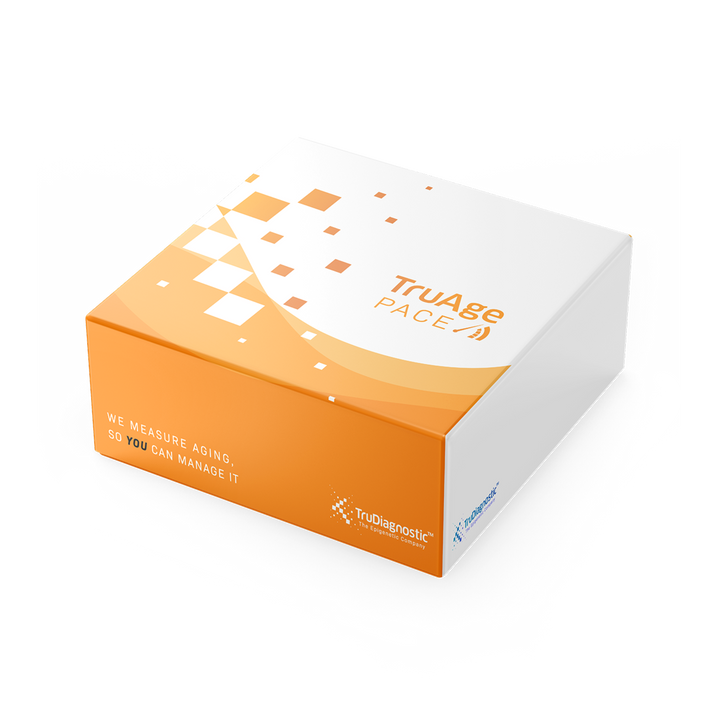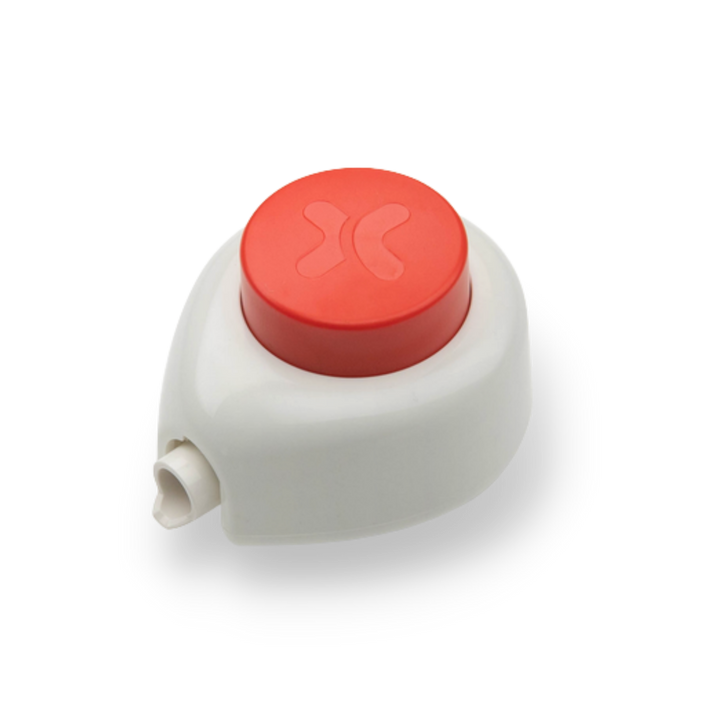What is Multi Omics?

Multi Omics, or the Multiome, is a term used to describe the various layers of human biology, and how they interact. As scientists strive to improve the precision and accuracy of biological age calculations (through the development of new, age-calculating algorithms), the importance of factoring in all of these levels is becoming blaringly evident.

Viewing health (along with other physical and cognitive traits that impact our quality of life) through the lens of multi omics allows for an in-depth, complete, and biology-based understanding of what exactly is causing the changes we experience as we age. When scientists program their mathematical algorithms with multi-omic data, biological age predictions are more accurate and actionable for both patients and their healthcare providers.

▐ Biological Aging is Multi-Faceted
Aging starts as molecular, biological processes, and is eventually visible through physical and cognitive traits of deterioration that impact your health and quality of life. From the DNA resting inside your cells' nucleus' to the growth of gray hair resting on your head, the biological journey of aging has several complex pit stops along the way.
The following biological elements and processes make up the multiome, with each layer affected by its predecessor until the trait that was coded in your DNA is finally observable.
| Genomics | The study of the genes housed in our DNA. Our DNA, located in the nucleus of our cells, contains sections of instructions (genes) that tell a cell how to behave. Your genetics stay the same from conception to death. |
| Epigenomics | The study of how our genes are modified. Epigenetic molecules interact with our DNA, either amplifying or silencing certain instructions. These interactions change throughout your lifetime. |
| Transcriptomics | The study of how our genes turn into actionable RNA. During transcription, molecules called RNA copy the instructions of our DNA; skipping over or boosting sections based on the epigenetic patterns at that location. |
| Proteomics | The study of how proteins function. Proteins are created by RNA, and perform most of the work within a cell. Antibodies, enzymes, and hormones are all types of protein functions. |
| Metabolomics | The study of the chemical processes produced by protein interactions. Metabolites are a by-product of proteins hard at work, and are used to help break down food, drugs, chemicals, or the body's own tissue. |
| Phenomics | The study of observable traits such as eye, skin, and hair color. Epigenetics can curate those instructions, and the resulting proteins and metabolites impact your biology to result in a physical expression. |
For an understandable analogy of these biological functions, you can think of multi omics like baking a dessert. The transformation from a recipe on a piece of paper, to a tangible, edible treat requires multiple steps. Similarly, our DNA alone does not simply produce the observable traits we experience.

|
 |
 |
 |
 |
 |
|
▐ Genomics could compare to your cake's recipe. These instructions, in and of themselves, can't do much other than...instruct! Like our DNA, a recipe can dictate orders, but neither have an available mechanism to ensure that those instructions are actually followed. |
▐ Epigenomics could compare to the annotations and modifications to your recipe that you've acquired over the years. These changes can include the tweaking, or completely skipping of, certain directions and ingredients; similar to how methylation molecules interact with DNA. |
▐ Transcriptomics could compare to copying the modified version of your recipe onto a shopping list, in order to start putting those instructions to work. This is similar to how RNA copies epigenetically-modified DNA instructions, in order to create proteins that can execute those orders. |
▐ Proteomics could compare to the purchased ingredients that both your recipe, and your modifications called for. Similar to your groceries, proteins are the physical manifestation of DNA instructions. Both can be considered the building blocks of what your recipe, or DNA, designed. |
▐ Metabolomics could compare to the process of mixing all of your ingredients together to produce your batter, and then the baking of your cake. Metabolites are byproducts of protein interactions, similar to how cake is created by the interaction of all of your ingredients. |
▐ Phenomics could compare to your fully baked dessert. Your cake is the product of each step in the baking process. This is just like how the observable, physical and cognitive traits you experience are the result of each layer of the multiome.
|
▐ Using Multi Omics to Measure Biological Age
Your biological age can be summarized as a calculation of the toll that life has taken on your body. If that sounds enigmatic, that's because it is! Temperature has degrees, weight has kilograms, distance has meters, but what singular unit of measurement can capture biological age? There isn't one!
In order to quantify the biological "toll of time", scientists must 1. be able to link age to different biological patterns that can already be directly measured, and 2. develop a mathematical equation (also known as an algorithm or clock) that examines, filters, and weighs those various age-related measurements in order to determine the overall, biological age of your body.
Each person's genetics, epigenetics, cellular transcriptions, proteins, and metabolites all play a role the aging process, further complicating scientists' ability to narrow in on a single biomarker to determine biological age. That's why it is crucial to zoom out, not in, and examine the interconnected nature of all of these biological markers.
The OMICm Age algorithm, developed in 2023 by scientists from TruDiagnostic and Harvard University, was able to establish correlations between proteins, metabolites, and other clinical measurements with quantifiable methylation patterns. By incorporating these newly established connections into their algorithm, the OMICm Age clock is able to deliver the most accurate results currently available in the epigenetic, scientific community.

▐ Multi Omics Improves Result Accuracy
You can understand the importance of multi omics in determining ones true biological age by thinking like a banker who is decided whether or not to issue a loan. To get a clear picture of the applicant's financial situation, you wouldn't want to only evaluate real estate assets, for example, before making a decision. Sure, real estate assets could be a large and important factor for you to consider, but what about other property assets, business assets, account balances, credit scores, stocks and bonds, income, outstanding debts, debt to income ratios, and more?
By factoring in more (and relevant) data points, your picture becomes clearer and your calculations more precise. This principal also applies to predicting biological age, with multi-omic factors elevating the accuracy of results.
When the Human Genome Project (an initiative to map the entire human genome) was first announced decades ago, many people thought the results would inform us about everything related to human biology. While it was a great project, the actionable health information gained from its efforts left many people disappointed. One reason why is that genetic composition is only one small piece of the puzzle.
We now know that the functionality of your body, as well as your health outcomes (phenotypes), are a result of much more than just your DNA. Your epigenetics and transcriptome, the peptides and proteins in your body (proteome), and the metabolites from your body's processes and environmental exposures are all crucial factors in how your biology operates.








